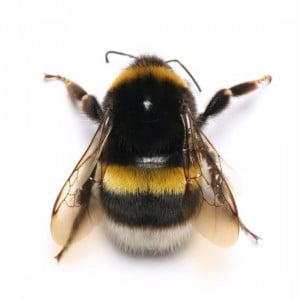Inflatable pools are an Aussie family summer tradition but the days of the slip-n-slide and inflatable pools could be over.
A safety group is currently pushing for legislation to look into the danger of inflatable pools, claiming that they are more dangerous than permanent pools due to the lack of safety fencing. In 2015, a report released by the Royal Life Saving Society showed a 50% increase in deaths of children under the age of five in waterways, pools and bathtubs in Australia in just one year.
The report cited a lack of adult supervision as the number one issue in these drownings.
Current Legislation (VIC, NSW, QLD, WA)
The Current legislation requires all swimming pools and spas on residential properties, with a depth greater than 30cm (300mm) to be surrounded by a safety barrier (e.g. a pool fence), and there are fines of up to $50,000 for those left unfenced. Unfortunately, the number of households without pool barriers has climbed to a staggering 42%.
Other states like South Australia and Tasmania stipulate that a temporary or above-ground pool’s walls may act as the fence, provided they are higher than 1.2m and there is no way a child can climb into the pool.
Current Issues
Supervision
Active adult supervision is essential in protecting your child from drowning. In all cases of drowning in children under five, supervision was either intermittent or lacking altogether. Active supervision means that a child is being constantly watched by an adult who is within arms reach at all times.
All of your attention should be on the child and you should never leave a child alone, or in the care of an older child, when they are in, on, or around the water.
Lack of barriers
Having a fence between your child and the pool is essential in protecting your child from drowning. Children, like most of us, love getting into the pool but they may not be aware of or understand the dangers of unsupervised pool time. A barrier will only allow children into the pool when there is a supervising adult around at all times.
In all cases of drowning in children under five, supervision was either intermittent or lacking altogether – so the proposed inflatable pool ban was developed in order to protect children that are currently not getting the supervision required.
How to fix the issue
Due to the lack of supervision, the damage has been done and the proposed ban could be placed into action by the time 2016-17 summer comes around, but here are some steps you should be taking to keep your kids as safe as possible, in and around your swimming pool:
-
Fencing
Even during pool construction, it is vital to use barriers for the safety of your children.
-
Supervise, supervise and supervise!
Watch your children at all times when they are using the pool, drowning can happen very quickly and very quietly. The best way to be alert is to swim with them, we are tempted to sit by the pool and read a magazine or a book, but drowning can happen in a matter of seconds.
-
Swimming lessons
Enrolling your children for swimming lessons are vital to teaching them safety in and around the pool, these lessons teach essential survival techniques and will ensure that in an emergency your child will be confident enough to swim to safety or float. Check with the instructors if the school offers training in how to swim safely when you are completely clothed.
-
Life jackets
For children who are too young or still in the process of learning how to swim, a life jacket is essential for survival. Take the time to check your local legislation regarding any floatation devices, because you may find some are not appropriate for young children.
-
Learn CPR and lifesaving skills
As a parent you have a responsibility of care towards your child, doing a 1-day CPR course make the difference between life and death. See a list of CPR courses around Australia here. They cost about $50 and are a lifelong skill that you will use at least once in the workplace or in public and hopefully not at home.
These are just some suggestions to take to keep your children safe in the water this coming summer.
Have you enrolled your kids in swimming lessons? It’s never too early to learn!
Image source Shutterstock.






















-

-
-
mom81879 said
- 10 Jan 2017
Reply
-

-
-
june11 said
- 07 Oct 2016
-

-
-
ella12 said
- 20 Sep 2016
-

-
-
tessie said
- 19 Sep 2016
-

-
-
rovermum said
- 19 Sep 2016
-

-
-
mom93821 said
- 18 Sep 2016
-

-
-
mom101628 said
- 17 Sep 2016
-

-
-
deb_gs said
- 17 Sep 2016
-

-
-
mom134803 said
- 16 Sep 2016
-

-
-
mom94125 said
- 05 Sep 2016
-

-
-
june11 said
- 21 Aug 2016
-

-
-
BellaB said
- 21 Aug 2016
-

-
-
mum4107 said
- 21 Aug 2016
-

-
-
mom134803 said
- 21 Aug 2016

-

-
-
mom81879 said
- 20 Aug 2016
-

-
-
mom160421 said
- 20 Aug 2016
Post a comment1:38 pm
1:12 pm
-

-
-
mom81879 replied
- 10 Jan 2017 , 1:37 pm
Reply11:26 am
11:10 am
9:21 am
8:16 am
9:28 pm
-

-
-
mom93821 replied
- 19 Sep 2016 , 5:33 am
Reply9:19 am
11:46 am
2:13 pm
9:36 pm
7:29 pm
5:35 am
3:44 am
4:56 pm
12:40 pm
To post a review/comment please join us or login so we can allocate your points.